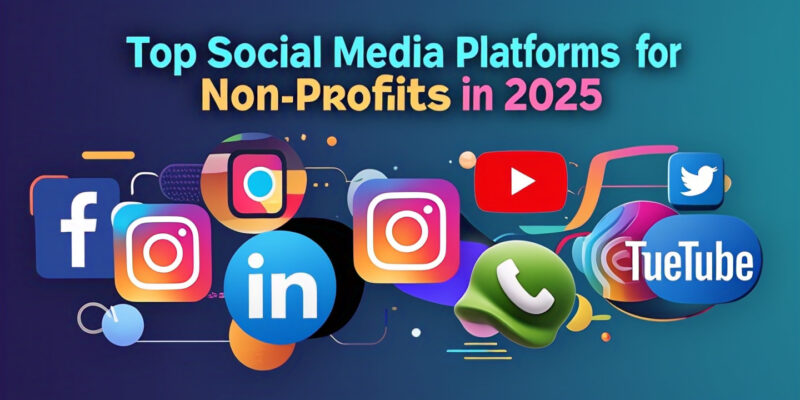How Non-Profits Can Succeed on Social Media in 2025
In the digital-first era, social media is not just a communication tool—it’s a cornerstone of strategic growth for non-profits. Whether raising awareness, driving donations, or building a thriving community, non-profits are leveraging the immense power of social platforms to amplify their mission. As of 2025, the social media landscape has evolved, offering more tools and opportunities than ever before.
This guide explores the best platforms for non-profits, actionable strategies for maximizing impact, and insights into leveraging social media effectively to align with your mission and connect with your audience.
The Social Media Landscape for Non-Profits in 2025
With over 4.9 billion users worldwide, social media remains a vital resource for non-profits. Key trends include:
Dominance of Video Content: Platforms prioritize short-form and live videos, boosting engagement.
Donor-Centric Campaigns: Authentic, transparent storytelling drives results.
Enhanced Fundraising Tools: Instagram, TikTok, and Facebook provide seamless donation features.
For non-profits, a strong social media presence is no longer optional—it’s essential.
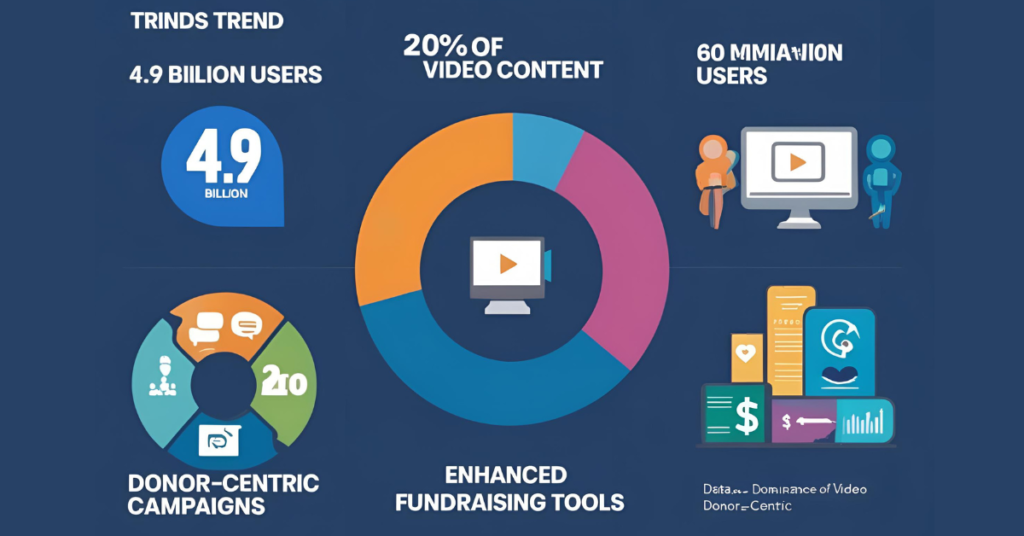
Top 5 Social Media Platforms for Non-Profits in 2025
1. Facebook
With 2.9 billion monthly users, Facebook is a cornerstone for visibility and engagement.
Key Features:
Facebook Fundraisers simplify donations directly on the platform.
Groups foster communities for in-depth engagement.
Meta Business Suite streamlines content management and analytics.
Best Practices:
Consistently post engaging visuals like videos and photos.
Host live events (e.g., Q&As, virtual fundraisers) to interact directly with supporters.
Utilize Facebook Ads to target specific audiences such as donors and volunteers.

2. Instagram
As a visual-first platform, Instagram excels in storytelling and showcasing non-profits’ impact.
Key Features:
Stories & Reels offer dynamic formats for real-time updates.
Donation Stickers simplify in-app contributions.
Collaboration tools enable partnerships with influencers or organizations.
Best Practices:
Use high-quality visuals to highlight success stories and behind-the-scenes moments.
Engage with followers using interactive stickers, polls, and questions.
Optimize your bio with a compelling call-to-action and website link.
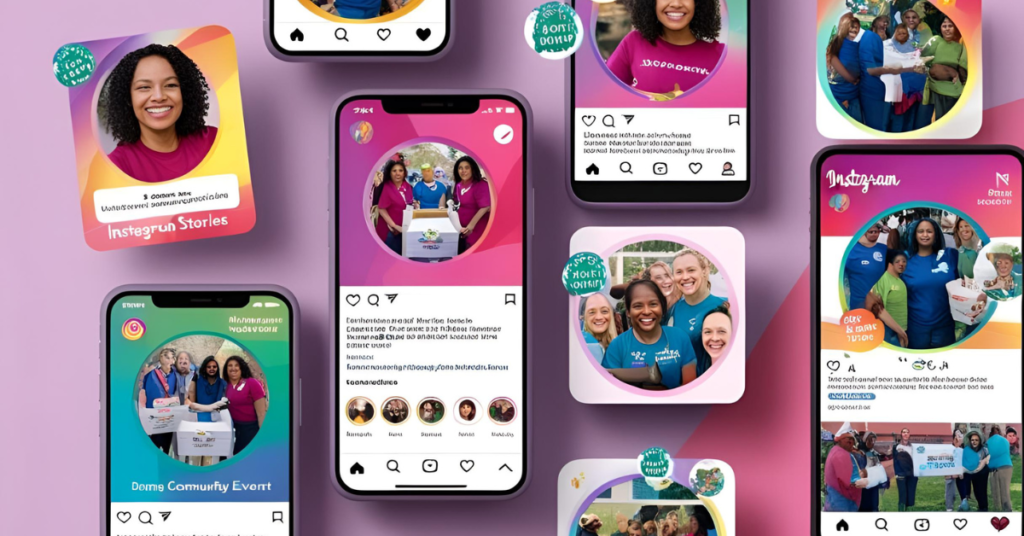
3. LinkedIn
LinkedIn is ideal for building professional relationships and attracting corporate sponsors or volunteers.
Key Features:
LinkedIn Articles allow non-profits to share in-depth insights.
Networking tools connect organizations with potential partners.
Ads target professionals and corporate donors effectively.
Best Practices:
Publish thought-leadership content to establish credibility.
Share updates on campaigns, partnerships, and achievements.
Join and engage in LinkedIn Groups related to your cause.
4. TikTok
TikTok’s short-form videos are perfect for connecting with younger audiences.
Key Features:
Viral Challenges boost visibility through creative engagement.
Donation Tools facilitate seamless contributions.
Authentic storytelling fosters emotional connections with audiences.
Best Practices:
Embrace trends and humor to create relatable content.
Collaborate with influencers to amplify reach.
Showcase your mission with compelling, authentic videos.
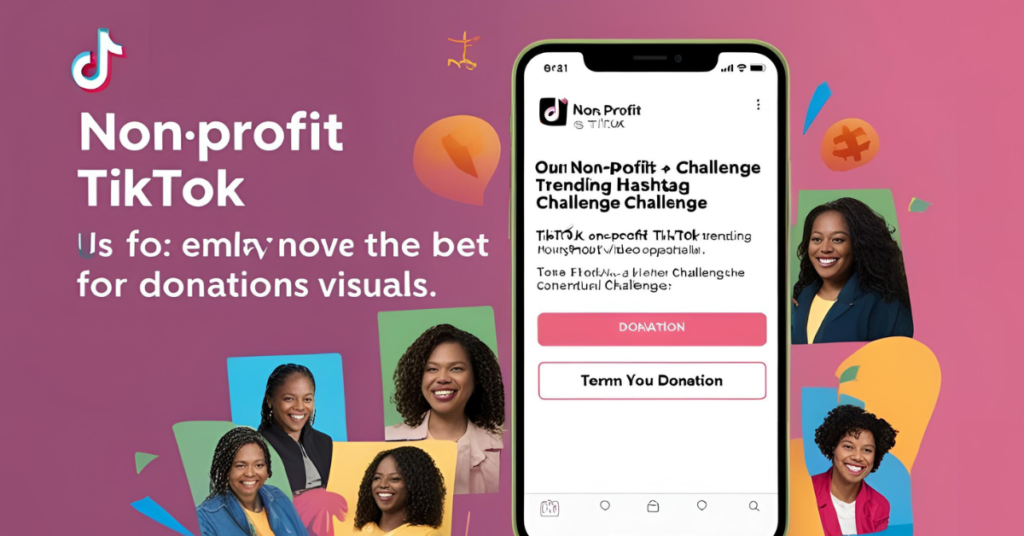
5. YouTube
YouTube’s long-form content helps non-profits educate and inspire audiences.
Key Features:
YouTube Giving enables donations directly from videos.
Live Streaming supports webinars, events, and fundraisers.
Educational Content establishes your organization as a thought leader.
Best Practices:
Optimize video titles, descriptions, and tags for SEO.
Encourage viewers to subscribe and engage with your content.
Share narratives that inspire and inform, keeping audiences invested.
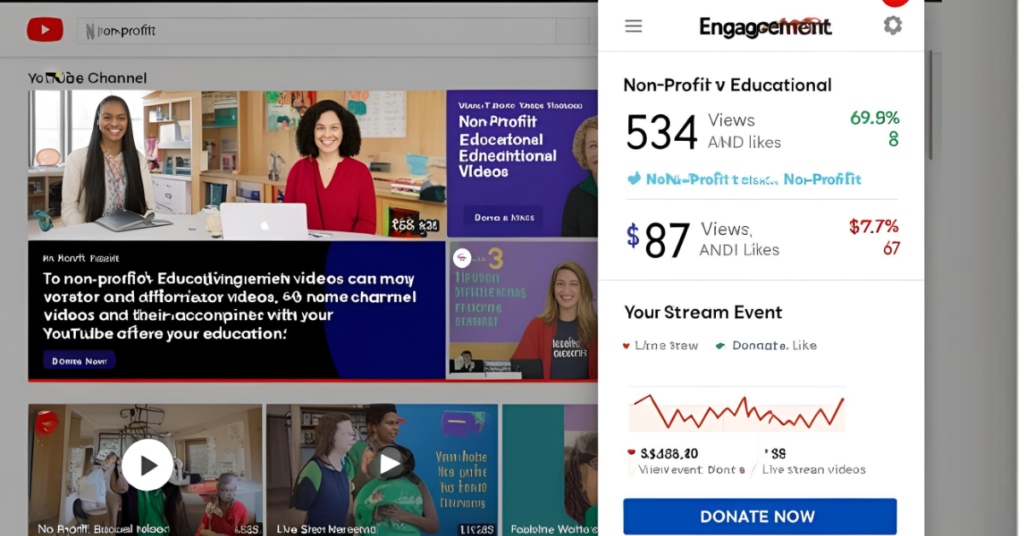
Strategies for a Cohesive Social Media Presence
To maximize impact across platforms:
Consistent Branding: Use the same logo, colors, and tone across all platforms.
Unified Messaging: Tailor content to fit each platform while maintaining a core message.
Cross-Promotion: Link platforms to drive traffic and increase visibility.
Overcoming Challenges in Social Media Marketing
Challenge: Limited resources for content creation.
Challenge: Low engagement rates.
Solution: Leverage interactive content such as polls or quizzes.
Challenge: Budget constraints for advertising.
Solution: Focus on organic growth through impactful storytelling and partnerships.

Measuring Success and Optimizing Strategies
Track these key metrics to refine your social media strategy:
Engagement Rate: Likes, shares, and comments.
Reach and Impressions: Number of users seeing your content.
Donations: Contributions generated through campaigns.
Website Traffic: Referrals from social platforms.
Tools like Google Analytics, Meta Insights, and Hootsuite can provide valuable data.
Conclusion
Social media remains a game-changer for non-profits in 2025. By leveraging the right platforms, embracing storytelling, and staying consistent, non-profits can expand their reach and amplify their impact.
Take Action: Start by identifying the platforms that align with your audience and mission. Focus on creating engaging content and measuring results to refine your strategy.
Frequently asked questions (FAQs)
Why is social media important for non-profits in 2025?
Social media helps non-profits reach a global audience, build relationships with supporters, and drive donations. With over 4.9 billion users worldwide, it provides unparalleled opportunities for visibility and engagement.
Which social media platforms are best for non-profits?
The top platforms for non-profits in 2025 include:
Facebook for its donation tools and community-building features.
Instagram for visual storytelling and engagement.
LinkedIn for professional networking and attracting sponsors.
TikTok for connecting with younger audiences through short-form videos.
YouTube for long-form educational and inspirational content.
How can non-profits use Facebook effectively?
Non-profits can use Facebook by:
Hosting live events like fundraisers or Q&A sessions.
Using Facebook Fundraisers to collect donations.
Creating Groups to foster community engagement.
What makes Instagram a good platform for non-profits?
Instagram’s visual-first approach is ideal for sharing impact stories, showcasing behind-the-scenes content, and driving donations through features like Donation Stickers and Reels.
How can non-profits benefit from LinkedIn?
LinkedIn helps non-profits build professional relationships, connect with corporate sponsors, and establish authority by sharing articles, updates, and participating in relevant Groups.
Is TikTok suitable for non-profits?
Yes, TikTok is a powerful platform for reaching younger audiences. Non-profits can leverage viral challenges, in-app donation tools, and authentic storytelling to boost engagement.
What type of content works best on YouTube for non-profits?
Long-form content like tutorials, webinars, and inspiring stories works best. Use YouTube Giving to enable donations directly through your channel and host live streams for events or fundraisers.
What are the best practices for maintaining a cohesive presence across platforms?
Keep branding consistent (logo, colors, tone).
Tailor content for each platform while maintaining a unified message.
Cross-promote by sharing links to other platforms in your posts.
How can non-profits leverage social media to attract donors?
Non-profits can attract donors by:
Sharing compelling success stories.
Using platform-specific donation tools like Facebook Fundraisers and Instagram Donation Stickers.
Hosting live events to build personal connections.
How often should non-profits post on social media?
While frequency varies by platform and audience, posting consistently (e.g., 3–5 times a week) is key. Regular updates keep followers engaged without overwhelming them.




